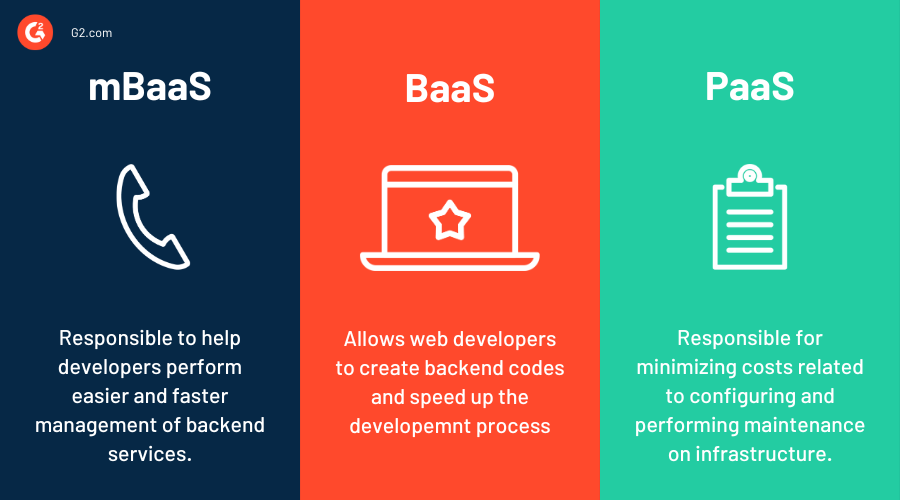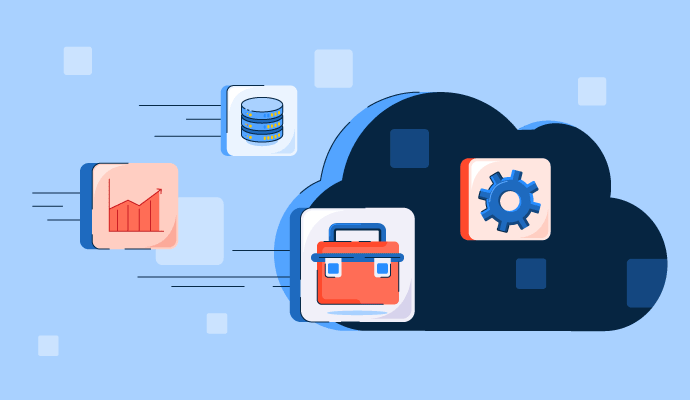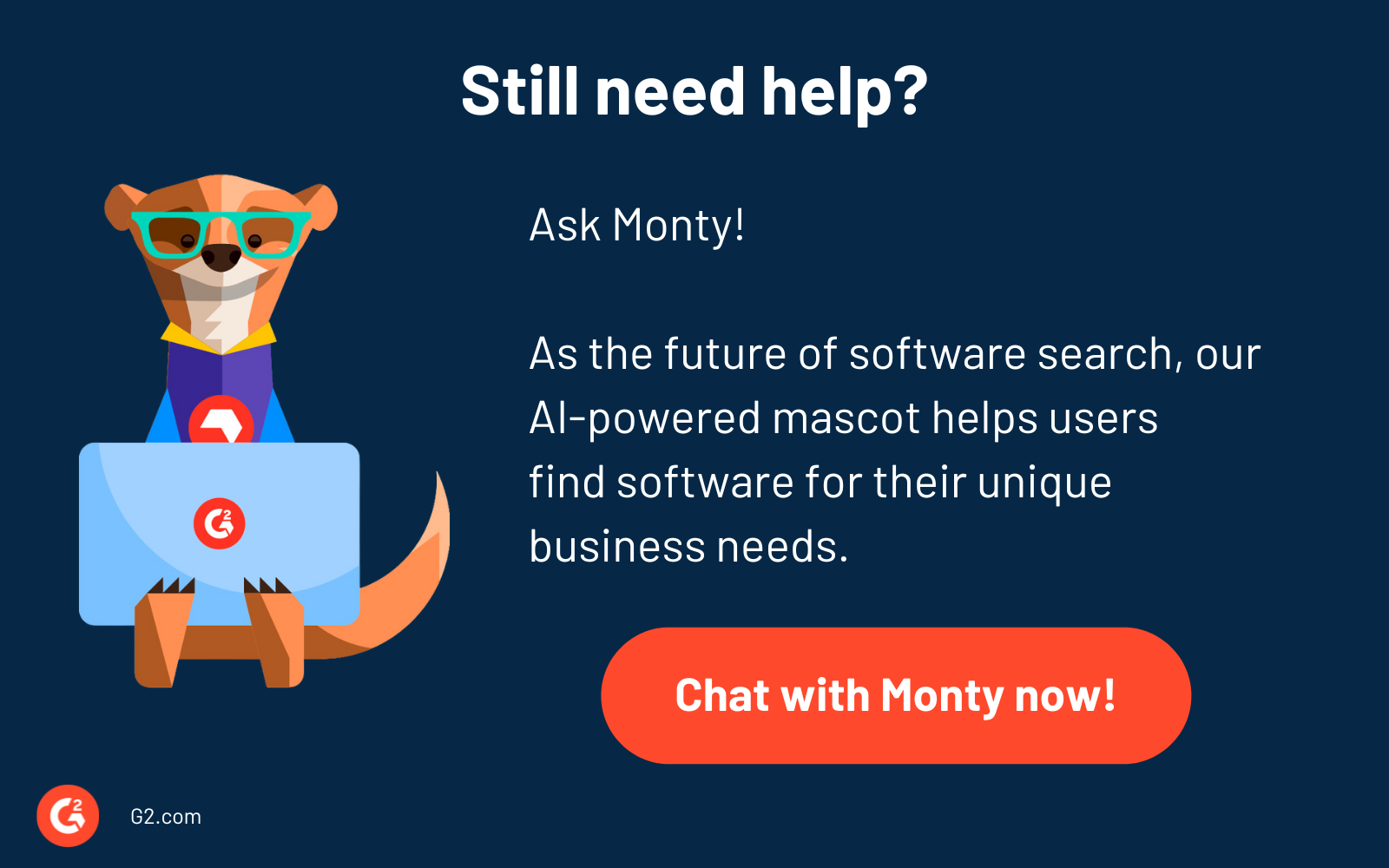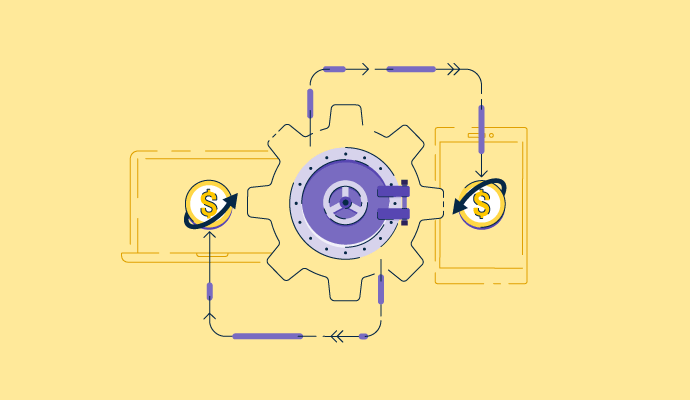Every day, hundreds of apps are born to cash in on how much we use them: for planning workflows, tracking fitness and diet, and watching movies.
Most of us don’t give a second thought about the labor that goes on behind the scenes, but if you’re a developer, you know how important the backend is and how essential mobile backend-as-a-service software (mBaaS) is.
Backend development is one of the most time-consuming stages of mobile application development because of the volume of code required to build business logic, backend functionality, data architecture, data storage, and file storage. Not too long ago, small and midsize businesses (SMB) in tech and startups either used to compromise on product quality or grow the development team with outsourced engineers to develop apps quickly.
But now, developers can turn to mBaaS to reduce repetitive, time-consuming processes without spending money on new hires or sacrificing standards.
What is mBaaS?
Mobile backend-as-a-service is an application platform devised as a comprehensive solution for backend app development. It gives developers complete access to tools that build and deploy apps on any device, regardless of the operating system.
Data and database management, application programming interfaces (APIs), analytics, push notifications, messaging, and security are just a few of the features that make mBaaS invaluable.
As mBaaS technology has evolved, tech giants and small and midsize businesses have adopted it to build simple, single-function applications, as well as complex solutions.
mBaaS lowers development costs for businesses and allows developers to focus on actually building the app instead of worrying about infrastructure. It often speeds up the app creation process and gets apps to the target users quickly.
How does mBaaS work?
While creating an application, developers need to work on two things:
- The front-end or UI of the application, which is the part that the user sees and engages with.
- The backend, which comprises all the features of the application.
Every application should have a robust backend, but creating it involves repetitive codes, as almost all the components are the same for most applications. The user interface, on the contrary, needs to be different for every application as it can significantly impact the user's engagement.
To make the UI different, the developers must create unique codes for all applications. However, this isn’t required for the backend because repetitive codes are involved. So most developers use mBaaS to create the backend.
mBaaS bridges the gap between an application's front-end and cloud-based back-end service using custom software development kits (SDKs), which can be easily integrated into the applications in APIs. It provides prebuilt code components for different features like push notifications, data processing, and business logic.
When the developers use mBaaS, they can reuse the code components provided and integrate them into the application. They're no longer required to spend time on software updates, scaling services, or backups. Instead, app developers can focus on building the front-end UI while mBaaS takes care of the backend.
¿Quieres aprender más sobre Software de Backend como Servicio Móvil (mBaaS)? Explora los productos de Backend móvil como servicio (mBaaS).
Basic mBaaS features
-
User management. It helps manage users, like signing up and logging in.
-
Push notifications. It helps send messages to your app, like news alerts.
- Social features. It helps with things like logging in with your Facebook or Google account and sharing things on social media.
mBaaS vs. BaaS vs. PaaS
The terms mBaaS, backend-as-a-service (BaaS), and platform-as-a-service (PaaS) are often used synonymously because they all deliver backend cloud support for application development.

mBaaS is like a specialized toolkit just for mobile apps. It gives mobile apps the special tools they need, like user logins, real-time databases, storing files, and special features like push notifications and finding your location. mBaaS is super good at making mobile apps work well and fast.
BaaS is a more traditional backend service for web apps. While it's providers can support web and mobile applications, it’s more common for them to offer extended storage capabilities to support web apps.
When should you use mBaaS?
As a low-cost, quick development solution, mBaaS fits the bill for a wide range of projects, such as an independent developer's app or a complex enterprise solution.
You can use mBaaS for mobile application development when:
- You need to speed up the development and deployment for a quick launch.
- You have time and budget constraints for app development.
- You’re expecting a large inflow of traffic to your mobile app.
- You’re building a highly secure application as required by law.
- You need a consistent front-end across platforms.
Applications of mBaaS
mBaaS is a handy toolbox for app makers. It has many applications:
- Infrastructure management. It sets up and manages servers, so app creators don't have to worry about them. Saves time and money.
- Handling APIs. mBaaS helps create and manage APIs (how different parts of the app talk to each other). Some platforms even let you make APIs without coding!
- Managing databases. It can work with existing databases or make new ones. Some platforms, like Backendless, have a speedy database and can connect to others.
- Easy login for users. mBaaS makes it easy for users to sign up and log in. Some, like Backendless, have extra features like password recovery and additional security.
- Enhancing backend. It can do tasks on the "back" of the app, which is faster and smarter. For non-techies, platforms like Backendless let you do this without coding.
- Provide cloud storage. mBaaS helps store files like images in the cloud, so you don't need unique storage systems.
- Provide access to data. It handles data differently for different devices so that you can make apps for many gadgets.
Top benefits of mBaaS
mBaaS gives you more time in your calendar and more money in your bank account, and if that’s not enough, take a look at what else this kind of platform promises.
- Better productivity. Since developers don't need to handle the time-consuming backend processes, they spend a shorter time on app development tools and more time focusing on building new products.
- No server maintenance. While using a mBaaS platform, developers don't have to work on any issues associated with running a backend infrastructure like server administration, backups, security updates, or performance optimization.
- More time to market. Developers like mBaaS platforms because they can immediately build the app UI interface, saving time and lowering development costs. Businesses can quickly convert an idea into an actual product and launch.
- Reduced hosting costs. You don't have to pay costly hosting and server-side maintenance fees with mBaaS. You only pay for the resources you use.
- Opportunity to scale. A mBaaS platform allows you to scale based on demand without investing time or resources in infrastructure planning and server resource allocation. It handles these complex tasks as you grow and transforms data for cross-platform delivery.
- Improved security. mBaaS platforms easily enables data encryption.
- Easy integration. Most mBaaS platforms eliminate the need to duplicate functionality across multiple systems by letting developers integrate with third-party systems such as social media services like Twitter, Facebook, and Slack.
Biggest challenges of mBaaS
mBaaS is a very valuable tool for the speed of backend development framework and cost-efficiency, but security limitations might give you pause. Before including a mBaaS platform in your mobile app development toolkit, familiarize yourself with its challenges.
- Minimal scope of customization. A mBaaS platform offers a wide range of backend features but only a limited capacity for customization, often making them insufficient for building complex features.
- Basic data security measures. Most mBaaS solutions provide limited security controls and leave it to developers to form the technical safeguards required. It’s easy to overlook these specifics and fail to implement security measures, leaving customer data unprotected.
- Vendor dependence. Developers can depend heavily on one tech provider without an easy way to shift to another. This is a common cloud computing threat, and it jeopardizes your application growth plans.
Best mBaaS software
Choosing good mBaaS software determines how you can contribute to your cloud-based mobile development project. Consider your potential mBaaS platform’s reliability, cost, and popularity when figuring out which brand to use.
To be included in this category, the software product must:
- Be user-friendly and easy to use.
- Secure cloud storage of files, databases, and server-side code.
- Consist of APIs to connect your application to required cloud services.
- Provide a well-tested architecture for data management and transaction processing.
- Allow secure communication between users and servers.
- Provide exceptional technical support.
- Have an affordable pricing model.
*Below are the top 5 leading mobile backend-as-a-service (mBaaS) software solutions from G2’s Winter 2023 Grid® Report. Some reviews may be edited for clarity.
1. Oracle Mobile Hub
Oracle Mobile Hub is a comprehensive cloud-based service that provides a platform for developing, deploying, maintaining, and analyzing mobile apps and resources. Developers can build faster at a low cost and analyze the performance faster. It eliminates the necessity for developers to be experts in everything.
What users like best:
"We can create web and mobile applications with its help in less time. It integrates with Oracle SAAS catalog and other REST Services and provides real-time data, usage, and performance monitoring facilities."
- Oracle Mobile Hub Review, Vibhash K.
What users dislike:
"The problem with Oracle Mobile Hub is its not-so-user-friendly UI and less-than-optimal interactive built-in software. A first-timer can be intimidated and confused since it provides too many above-the-board scenarios and options for a simple search of options and tools.”
- Oracle Mobile Hub Review, Shubham C.
2. AWS Amplify
AWS Amplify is a development solution that allows frontend web and mobile developers to build, deploy, and host full-stack applications on Amazon Web Services (AWS) while providing a smooth user experience. Without understanding cloud engineering, developers can still market fast and scale.
What users like best:
"It is easy to use and provides a wide range of useful features and integrations that make it a great choice for developers looking to build and deploy applications quickly and efficiently."
- AWS Amplify Review, Sachin S.
What users dislike:
"As per my experience with mobile backend development, I found the hosting charges a bit toward the higher end, considering a sizable number of users visiting daily."
- AWS Amplify Review, Shwetank D.
3. Salesforce Heroku
Salesforce Heroku, part of the Salesforce Platform, combines and computes data with developer experience. Whether you're building a simple or complex prototype, Heroku's fully-managed platform creates, delivers, and scales apps with a single click and no downtime.
What users like best:
"Heroku provides tools that enable us to deploy our application more easily and with less configuration. We get to focus on product development and rapid improvement instead of spending it tinkering with server configuration."
- Salesforce Heroku Review, Bryan M.
What users dislike:
"Our Salesforce custom portal was integrated with Heroku, and with each Salesforce upgrade, we are measuring component and overall page performance. We observed a decline in loading time after each subsequent upgrade."
- Salesforce Heroku Review, Harsh V.
4. Backendless
Backendless is an app development platform that offers low-code and no-code tools for developers of all experience levels. It includes a codeless logic builder, component UI Builder, and user authentication. Using it cuts down on development time, raises scalability, and lowers costs.
What users like best:
"The feature that stands above the rest is their customer service. They have set the bar. Responses to issues are quick and often come from the founder himself. Extraordinary! Then you add the robust feature set and ease of use, and you have a first-class platform."
-Backendless Review, Mark C.
What users dislike:
"I wish authentication was easier. Also, documentation for those using no-code platforms could be more built out, similar to how the documentation is built out for the major coding languages."
- Backendless Review, Charles F.
5. Rackspace Technology
Rackspace Technology is a tool that innovates cloud capabilities to reduce costs, increase efficiency, and scale when required. Developers can use it without an in-depth understanding of the cloud.
What users like best:
"The thing I like the most about it is that it is ideal for heavy and unpredictable traffic and works with a 'pay as you go' scalability. This helps us connect to public and private clouds for individual applications. It delivers unbiased guidance on best-fit managed cloud solutions to organizations around the globe. We get full support from the world's leading cloud platforms, which saves us the pain and complexity of doing it ourselves."
- Rackspace Technology Review, Soubhagya S.
What users dislike:
"Seems designed for larger companies with an IT staff. The level of knowledge they expect from customers makes them a not-so-great match for us. We require a company that can speak to experienced but relatively less technical people in a way they can understand."
- Rackspace Technology Review, Philip P.
Laidback(end)
Application development has become an essential part of a technology-driven world as we implement apps into our daily lives. We use mobile applications to track deadlines, meditate, and budget.
With the growing ecosystem of applications, developers have to build apps that are not only high in quality but also super fast and easy to use. In turn, mBaaS makes their work faster and simpler.
Discover great application development platforms to create superior apps that succeed.

Devyani Mehta
Devyani Mehta is a content marketing specialist at G2. She has worked with several SaaS startups in India, which has helped her gain diverse industry experience. At G2, she shares her insights on complex cybersecurity concepts like web application firewalls, RASP, and SSPM. Outside work, she enjoys traveling, cafe hopping, and volunteering in the education sector. Connect with her on LinkedIn.


